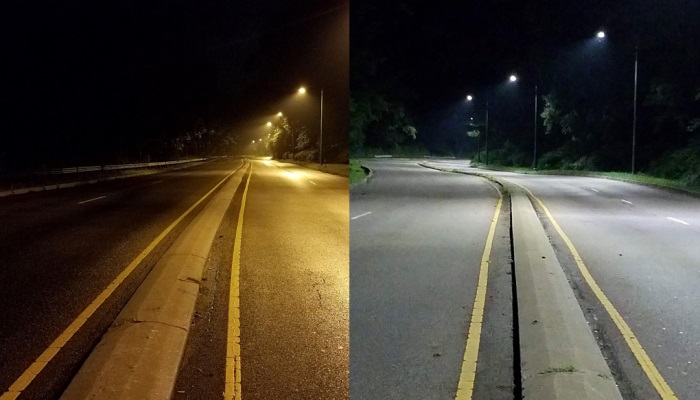LED Light Conversion
Mechanicsburg Borough Converts Outdated Lights
The 775 streetlights illuminating Mechanicsburg’s neighborhoods can make all the difference in preventing crashes and improving quality of life for residents across the city. However, many of these streetlights rely on older technology, rendering them less durable and energy inefficient. Now, through a partnership between the Borough and PPL, our streetlights are getting a much-needed upgrade.
When complete, the Borough Streetlight Improvement Project will have converted 775 old, high-pressure sodium streetlights into a network of efficient, longer-lasting LED lights. By upgrading to better quality lights with a new lighting management system, residents will benefit from better visibility and faster lighting replacement times. The upgrade will also save the Borough thousands of dollars annually and greatly reduce carbon emissions. These improvements – from safer streets for pedestrians and cyclists and reduced vehicular crashes, to clearer footage on video monitoring systems – are invaluable.
- LED lights provide more focused lighting, and they appear whiter and brighter than HPS. The Borough receives requests from concerned residents for lighting improvements, citing safety concerns.
- LED lighting emits equivalent useful lighting while significantly reducing the overall output of lumens. The kilowatt hours will be reduced to less than 50% of current usage.
- LED lighting reduces many negative lighting impacts, including backlight, up light, and glare.
- Wasted light, light trespass, and light pollution are more manageable with proper LED lighting.
- LED lights provide cost-savings to the Borough. They are more reliable, require less maintenance, and have a lifespan that extends well past that of the HPS lights. They also consume much less energy than HPS lights.
- Enhanced lighting benefits public safety, including law enforcement, pedestrian safety, and motorist visibility, especially on wet roads or during inclement weather.
Are the new lights too bright? PPL was installing LEDs with a standard CCT of 4000K. In 2016, the AMA provided a report that recommended fixtures with a CCT of 3000K or lower for roadway installations. Their concerns focus on the short-wavelength emission, or blue light, from LED sources as possibly related to glare, melatonin suppression, and circadian disruption. However, the focus on just the CCT ignores other factors such as amount, duration, and timing of light exposure. LED lights contain more blue light than HPS lights. However, LEDs have a reduced lumen output when compared to HPS (HPS 9,500 lumen output is equivalent to an LED 4,900 lumen output). This reduced lumen output is thought to significantly offset this inequality. Research from the Federal Highway Administration shows that exposure to artificial lighting of 2500 lux of white light for two to four hours can suppress melatonin. The light levels of residential street lighting systems rarely exceed 10 lux outdoors. Indoors and behind curtains, the levels are likely even lower. For comparison, blue light exposure from electronic devices such as televisions, cell phones, tablets, and computers is about 15-30 lux. However, PPL responded to Mechanicsburg’s concerned citizens and has continued their installations with a slightly lower, 3000 CCT LED light for the lower mounted lights in residential areas.
As part of the conversion agreement, PPL has agreed to install shields on the lights and make adjustments, when possible, upon request at locations where the LED lights are perceived as problematic. It is imperative that requests include the direction(s) of primary concern. If you would like to request a shield, please submit a complaint using this link. Streetlight Complaint Form..jpg)

